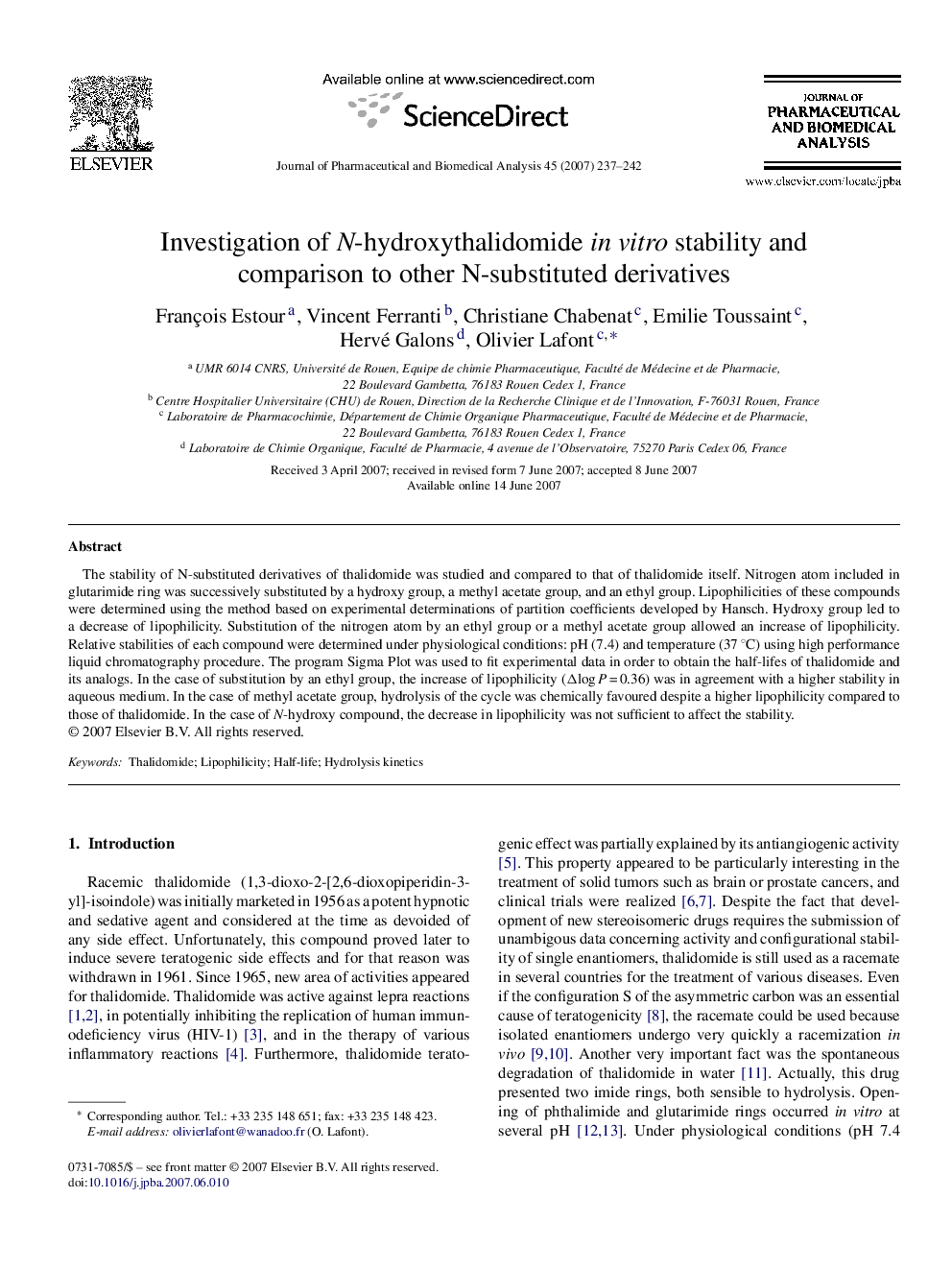| Article ID | Journal | Published Year | Pages | File Type |
|---|---|---|---|---|
| 1224215 | Journal of Pharmaceutical and Biomedical Analysis | 2007 | 6 Pages |
The stability of N-substituted derivatives of thalidomide was studied and compared to that of thalidomide itself. Nitrogen atom included in glutarimide ring was successively substituted by a hydroxy group, a methyl acetate group, and an ethyl group. Lipophilicities of these compounds were determined using the method based on experimental determinations of partition coefficients developed by Hansch. Hydroxy group led to a decrease of lipophilicity. Substitution of the nitrogen atom by an ethyl group or a methyl acetate group allowed an increase of lipophilicity. Relative stabilities of each compound were determined under physiological conditions: pH (7.4) and temperature (37 °C) using high performance liquid chromatography procedure. The program Sigma Plot was used to fit experimental data in order to obtain the half-lifes of thalidomide and its analogs. In the case of substitution by an ethyl group, the increase of lipophilicity (Δlog P = 0.36) was in agreement with a higher stability in aqueous medium. In the case of methyl acetate group, hydrolysis of the cycle was chemically favoured despite a higher lipophilicity compared to those of thalidomide. In the case of N-hydroxy compound, the decrease in lipophilicity was not sufficient to affect the stability.
